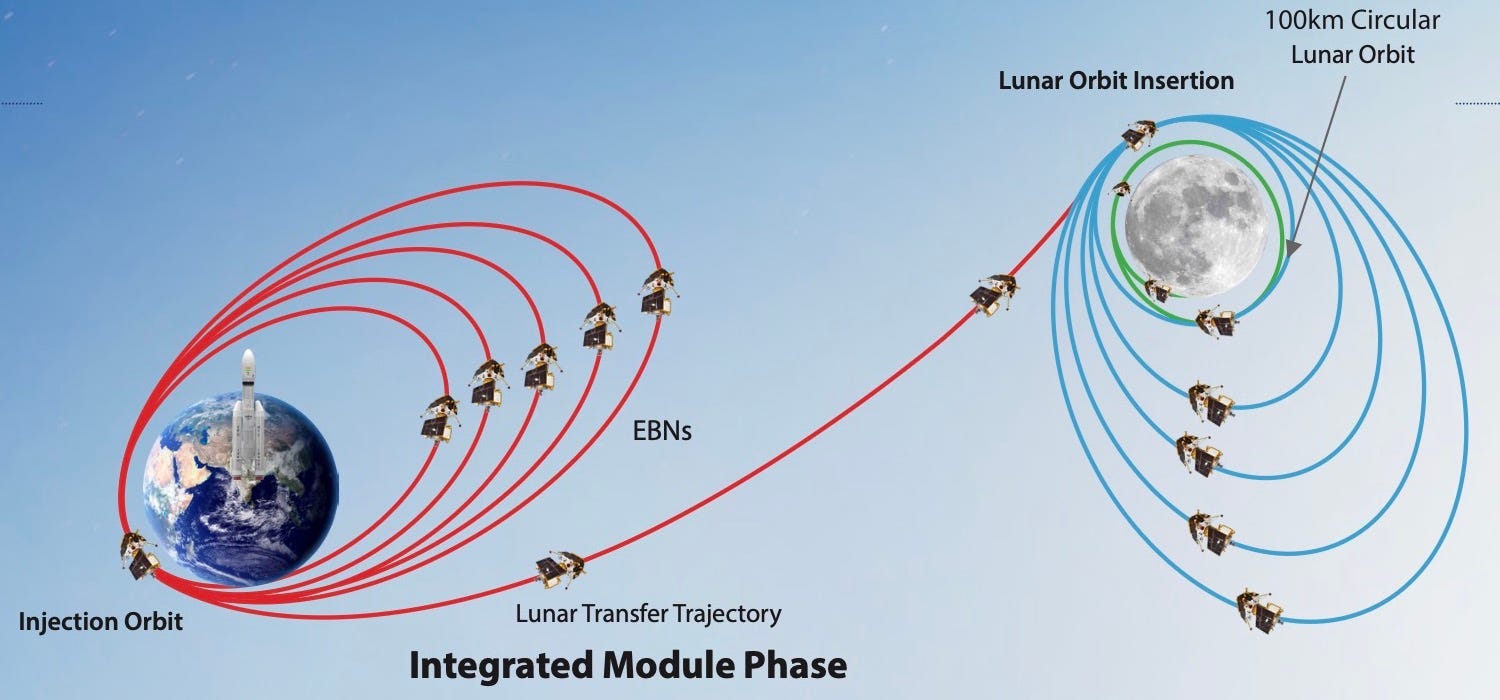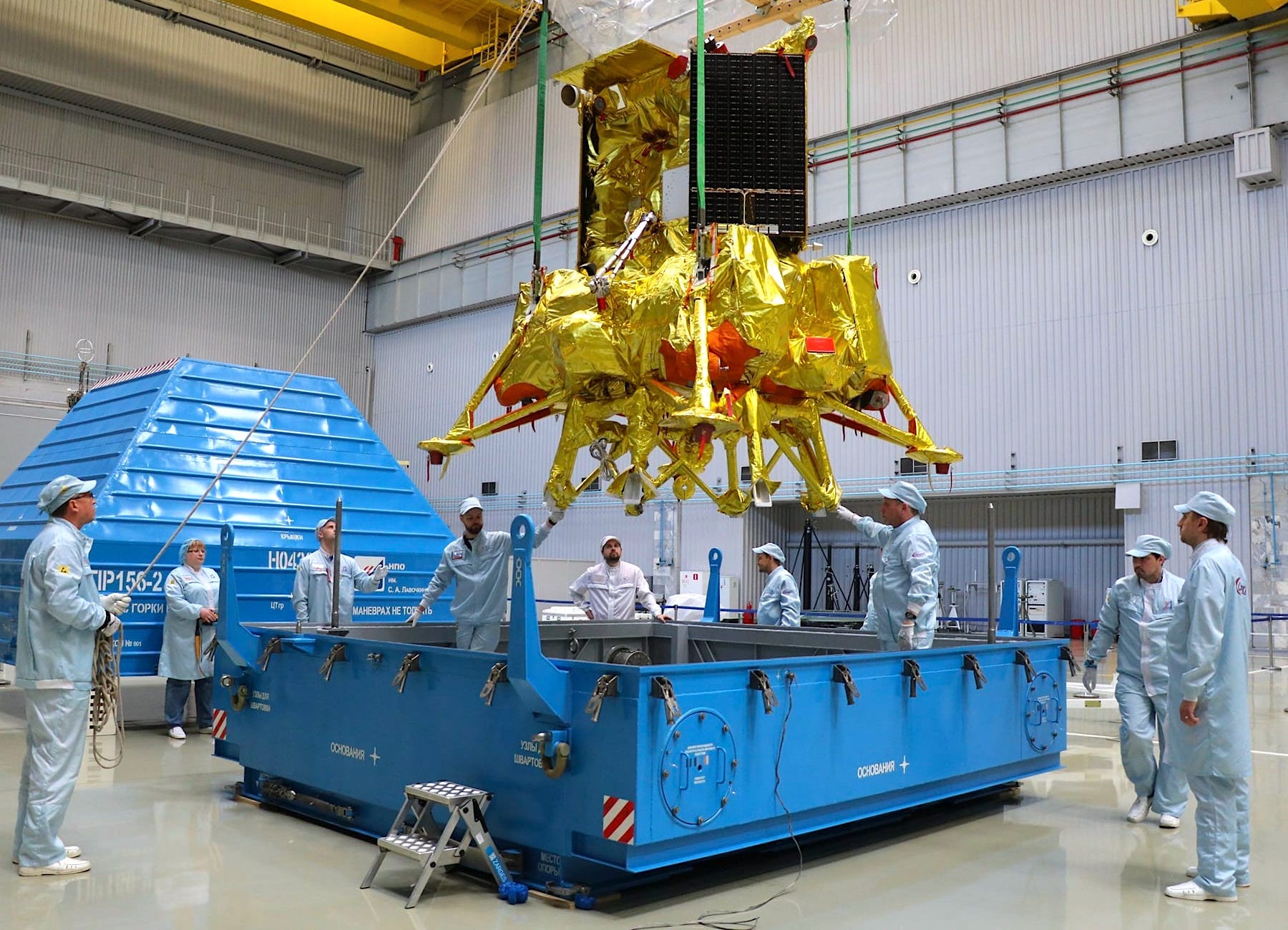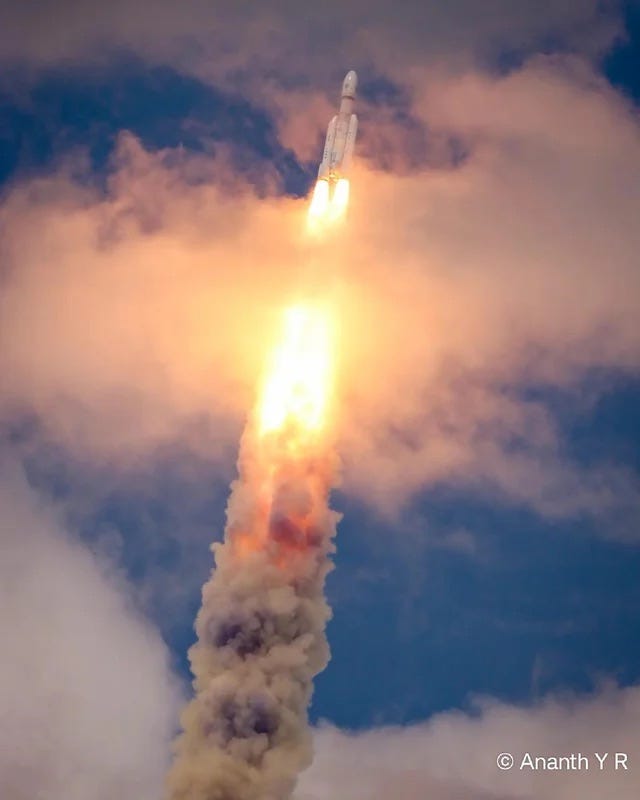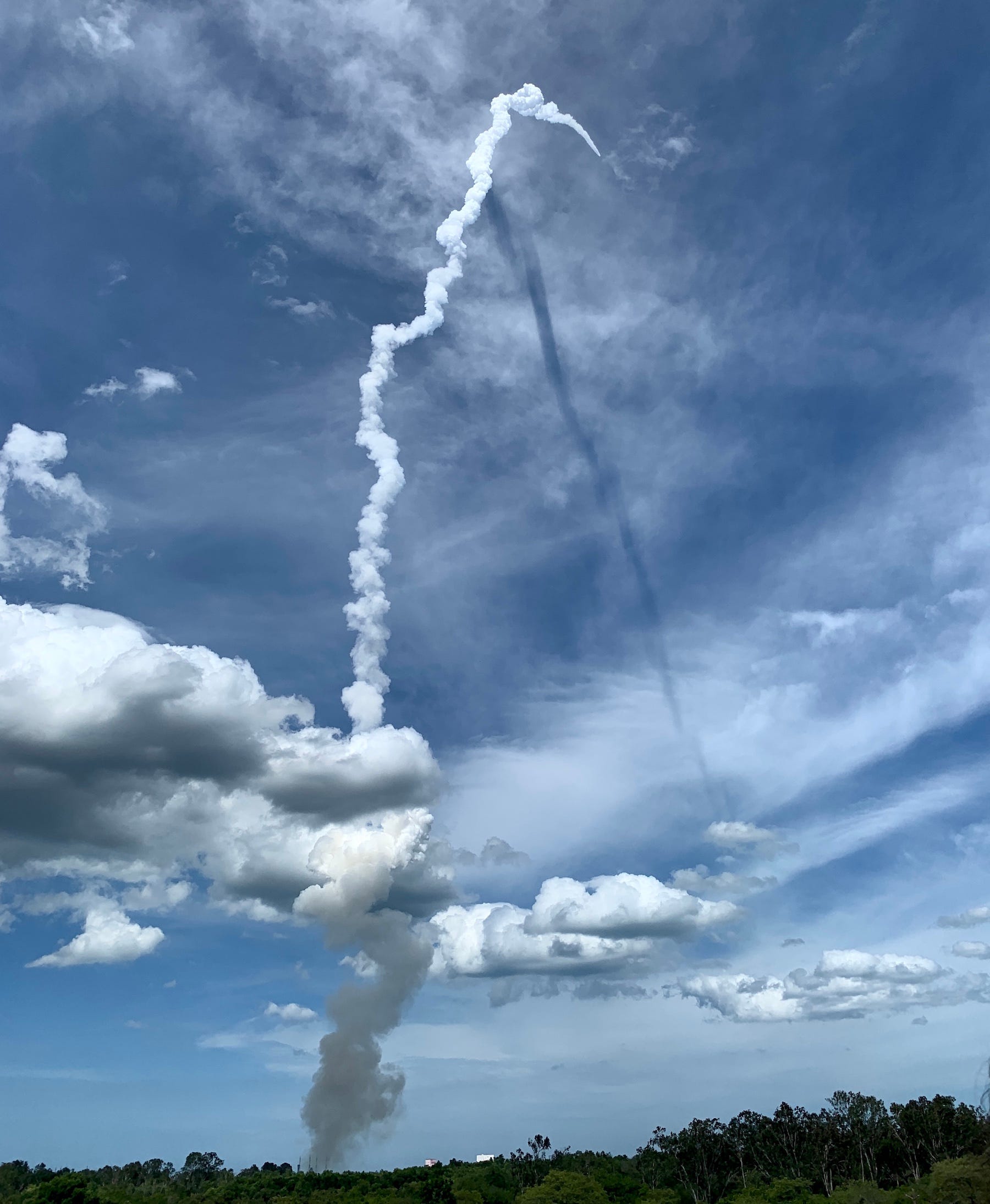Moon Monday #136: Chandrayaan 3 on its way to Luna as Russia and Japan prep their Moonshot, plus NASA mission updates

On July 14, Friday at 14:35 IST (09:05 UTC), ISRO launched the robotic Chandrayaan 3 spacecraft for a second attempt to land on the Moon. Chandrayaan 3’s Project Director P. Veeramuthuvel said in a post-launch briefing that the GSLV Mk III rocket injected the spacecraft close to the ideal intended orbit of 170 x 36,500 kilometers. He added that both the lander and its connected propulsion module are generating power nominally.
On July 15, ISRO confirmed Chandrayaan 3’s propulsion module having fired its engines and raising the combined spacecraft’s orbit to 173 by 41762 kilometers, the first in a series of maneuvers leading to a push towards the Moon around July 31. The orbit perigee was raised to 226 kilometers on July 17. Relatedly, Sankar Viswanathan has created a cool orbit animation of Chandrayaan 3’s mission profile using ephemeris data from the online NASA JPL HORIZONS tool.

A graceful touchdown by the lander on August 23 would make India only the fourth country in the world to achieve the feat, following the USSR, the US, and China. My article on the mission discusses its scientific details, its global relevance, and critical importance to India in anchoring a long-term role in shaping lunar exploration and governance. Read the piece:
How did Chandrayaan 2 fail?
In an interview with ANI, ISRO Chief S. Somanath explained that the Chandrayaan 2 Moon lander failed due to two major reasons. Its five main engines were firing at a slightly greater thrust than expected, which accumulated navigation errors over time. As a result, at some point the parameters related to these errors surpassed the bounds against which the onboard software was designed and tested. Combined with the built-in requirement that the lander must only target a tight landing ellipse of 500 by 500 meters—despite it being a non-nominal scenario—the lander ended up increasing its velocity while descending and thus crashed on the Moon. Somanath later explained how all of these issues have been resolved for Chandrayaan 3.
Two more Moon landers prep for liftoff

- After passing a standard series of space simulating tests, the Roscosmos Luna 25 robotic Moon lander was delivered to its launch site Vostochny Cosmodrome to prepare for an August 11 launch, says Anatoly Zak. Luna 25’s instruments include a robotic arm to sample material from 20 to 30 centimeters below the surface and then feed it to a laser spectrometer to determine elements and isotopes within. There’s also a neutron and a gamma ray spectrometer respectively to identify the composition of the subsurface. The mission’s landing site at 69.5°S, 43.5°W, while not truly polar due to engineering constraints, is selected such that subsurface water ice could still be detected.
- JAXA’s SLIM Moon lander will launch on the Japanese H-2A rocket on August 26 at 09:34 JST (00:34 UTC). The launch window runs through to September 15. The compact lander aims to demonstrate pinpoint lunar touchdown (~100-meter accuracy) with a low mass of just 590 kilograms. To that end, SLIM will land somewhere within the rocky ejecta of the 300-meter wide Shioli crater. Orbital data suggests that studying the crater’s ejecta using SLIM’s near-infrared, multi-band spectroscopic camera could enhance our knowledge about the Moon’s mantle and its formation.
Many thanks to Epsilon3, The Orbital Index and Open Lunar Foundation for sponsoring this week’s Moon Monday.
CLPS and Artemis updates
- Intuitive Machines has completed the final ground test of its first Moon lander, which includes hot firing the main engine, to verify various key functionalities for its upcoming late Q3 mission near the Moon’s south pole as part of NASA’s CLPS program. Next up the lander will undergo a standard series of space simulating tests before being prepared for launch.
- NASA has received from Canoo three next-generation, all-electric vans which will transport the agency’s Moonbound astronauts from suit-up facilities to the launchpad starting with Artemis II. Formally called the “Artemis Crew Transportation Vehicle”, each van can carry up to 8 passengers, including 4 fully suited astronauts. The vans will also support other related tasks such as prelaunch operations, training and launch countdown tests.

Southwest Research Institute has delivered the high-resolution plasma spectrometer to be onboard Intuitive Machines’ third CLPS Moon lander, which is targeting a 2024 launch to the magnetic swirl of Reiner Gamma on our Moon. The 5-kilogram spectrometer is a key part of Lunar Vertex, a suite of instruments on the lander and a rover to help scientists better understand the effects of solar wind and bombarding micrometeorites on planetary bodies across the Solar System, and also shape our understanding of the Moon’s magnetic evolution.
NASA will fund a 2027 CLPS mission to have a rover study the enigmatic volcanic feature of Ina on our Moon so as to “definitively resolve the debate on how recently the Moon was volcanically active”.
Tangent: Both Ina and Reiner Gamma are featured in my curated digital gallery of weird yet wonderful lunar features. 🌝
NASA has awarded $5 million to Collins Aerospace to advance work on its lunar spacesuit as part of the company’s selection alongside Axiom Space’s offering to competitively provide suits for the agency’s crewed Artemis missions.
More Moon
- In October 2021, ISRO sent commands to its lunar polar orbiting Chandrayaan 2 orbiter to change its orbit slightly for avoiding an uncomfortably close approach of about 3 kilometers to NASA’s near-polar circling Lunar Reconnaissance Orbiter (LRO). Now in a May 2023 summary of India’s space activities, ISRO mentions that on its request the LRO team postponed their spacecraft’s “Momentum Dumping” plan in order to avoid more such uncomfortably close conjunctions between the two orbiters.
- Popular Indian YouTuber Gareeb Scientist has a great interview with ISRO Chief S. Somanath discussing a whole range of finer things related to Chandrayaan 3. Gareeb Scientist usually does videos in Hindi to benefit the Indian demographic but this one is in English for accessibility by a broader global audience.
Feeling the Chandrayaan 3 launch
I was thrilled to be at Sriharikota to watch Chandrayaan 3 blast off for the Moon. Feeling the rumblings caused by the rocket was epic. I witnessed the liftoff and ascent from the public Launch View Gallery, which was packed with well over 5,000 spectators and from where people have captured really cool imagery.


